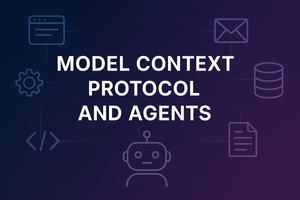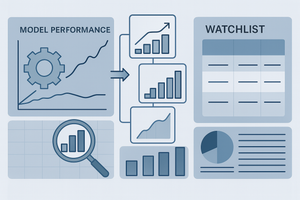Introduction
Modern data systems are at an inflection point. The demands of real-time analytics, reactive user experiences, fraud detection, and operational intelligence are exposing the limits of batch-oriented architectures. In this context, Apache Flink is not just another stream processor. It’s a system that redefines how enterprises process, enrich, and act on data in motion.
This isn’t about trend-chasing. It’s about architecture that aligns with where data is heading.
The Engine Underneath
Apache Flink is a distributed, high-throughput, low-latency stream processing engine with robust support for event-time processing, stateful computation, and exactly-once semantics. Unlike many systems retrofitted for streaming, Flink was designed from the ground up with a stream-first but batch-capable model, unifying both under a single runtime.
Key architectural strengths include:
- Event-time semantics and watermarking for precise, out-of-order processing
- Exactly-once state consistency, even under failure conditions
- Pluggable state backends like RocksDB for large-scale stateful operations
- Savepoints and rescaling for long-running, evolving jobs
- Rich APIs including DataStream for advanced control and SQL/Table API for declarative workflows
This blend of power and flexibility positions Flink not just as a Kafka consumer, but as a stateful compute layer for real-time applications.
Rethinking the Problem Space
Most enterprise data architectures still revolve around batch-first paradigms. Data is collected, stored, and then processed in scheduled jobs. This worked fine when “real-time” meant “later today.” Businesses tolerated multi-hour ETL pipelines, and daily reporting was fast enough.
But those days are gone:
- User behavior shifts in seconds
- Fraud happens in milliseconds
- Business decisions can’t wait for cron jobs
Flink addresses this shift directly. It enables systems to compute, enrich, and react to data continuously at scale with consistency guarantees. Real-time joins, on-the-fly aggregations, and sub-second responsiveness become first-class capabilities.
Furthermore, Flink expands the scope of participation in stream processing. Where many frameworks limit usage to backend teams, Flink’s SQL and Table APIs bring declarative power to product teams and analysts, without giving up correctness or performance.
Real-World Leverage: Netflix & Amazon
Netflix’s evolution illustrates Flink’s architectural leverage. Their initial Data Mesh platform used tightly coupled, pre-built Flink processors and low-level APIs. It worked, but it wasn’t scalable for teams across the organization. The transition to Flink Streaming SQL changed that.
By enabling streaming pipelines to be defined using SQL, Netflix unlocked features like:
- Interactive query previews
- Real-time validation and schema inference
- Platform-managed deployment of Flink jobs
The result? Faster iteration, greater data literacy across teams, and a scalable mesh built for both speed and autonomy.
Amazon, meanwhile, demonstrates Flink’s power in real-time enrichment use cases. In scenarios where clickstreams must be joined with static customer profiles or product catalogs, Flink enables high-throughput joins without resorting to brittle glue code or Lambda chains.
Flink 2.0: A Platform Maturing
The release of Apache Flink 2.0 marks a turning point. It introduces:
- A unified source architecture for more efficient and flexible ingestion
- State evolution APIs for easier schema migration and long-term state handling
- Flink Agents (FLIP-531): a new subproject that abstracts operational complexity and improves lifecycle management
These enhancements reduce friction and make Flink more viable for teams seeking long-term architectural sustainability. Flink is no longer just a powerful engine - it’s becoming a maintainable platform.
Strategic Implications for Tech Leaders
Flink shifts the way we think about system design in key ways:
- From batch-first to unified streaming models
- From static data movement to dynamic, in-flight enrichment
- From code-bound pipelines to SQL-accessible interfaces
- From stateless microservices to durable, queryable stateful systems
Collections like flink-at-scale demonstrate how these capabilities are applied in real-world deployments, encompassing modular pipelines, CI/CD integration, and architecture patterns designed for resilience and cost efficiency.
When to Take Flink Seriously
Flink isn’t a silver bullet, but it’s an extremely sharp tool. It makes strategic sense when:
- You’ve outgrown Kafka + Spark + Lambda patterns
- You’re building systems where data value decays rapidly (ads, sensors, fraud)
- You want to democratize pipeline development with SQL interfaces
- You need low-latency, high-correctness stateful logic without spinning up dozens of microservices
Final Thoughts
Apache Flink isn’t trying to be everything, but what it is, it does exceptionally well. It provides a principled, expressive, and production-hardened approach to processing data in motion.
For developers, it’s a design playground where time, state, and compute converge.
For data leaders, it’s an architectural lever: one that reduces latency, unlocks team autonomy, and helps modernize toward a truly real-time enterprise.
If your systems interact with real-time data, Apache Flink may be a strategic investment worth considering.
📚 References & Further Reading
- Apache Flink 2.0: A New Era of Real-Time Data Processing
- AWS: Real-Time Data Enrichment Patterns with Apache Flink
- Decodable: Understanding the Apache Flink Journey
- FLIP-531: Flink Agents Sub-Project
- GitHub: flink-at-scale
- Netflix: Democratizing Stream Processing with Streaming SQL (LND25)



